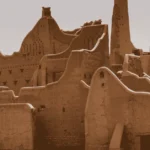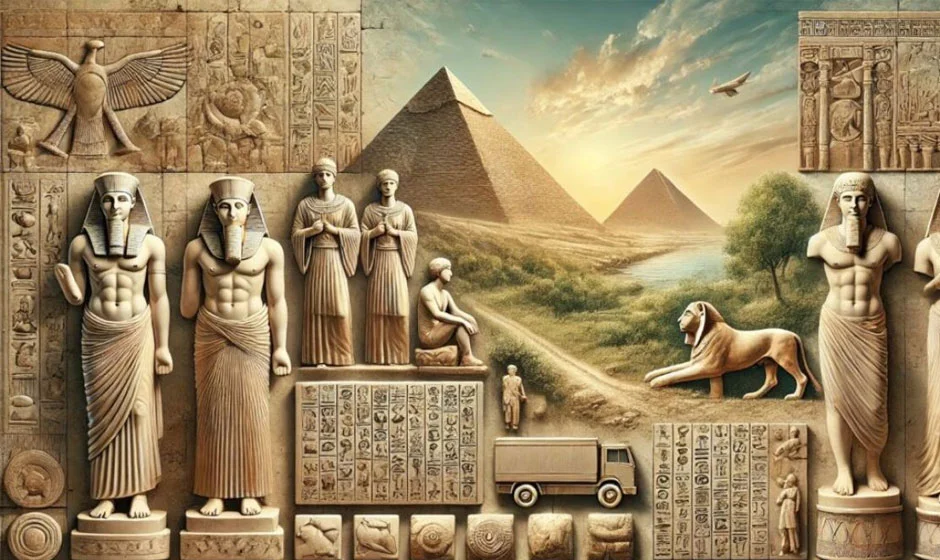Art is one of the most powerful forms of human expression. It transcends time, language, and culture, offering a glimpse into the hearts and minds of people from the past. “Ancient Artz” isn’t just about paintings or sculptures—it’s a living record of humanity’s earliest stories, beliefs, and values. This article explores the significance, styles, materials, and cultural impact of ancient art from civilizations across the globe.
The Dawn of Creativity: Prehistoric Art
Long before cities, kings, and written language, humans used art to communicate. Prehistoric art—like cave paintings, carvings, and symbolic objects—marks the earliest known form of artistic expression. Some of the most famous examples include:
- Cave Paintings in Lascaux, France: Dating back over 17,000 years, these remarkable artworks depict animals such as horses, deer, and bison. Created with natural pigments, they reveal early humans’ close relationship with nature.
- Venus Figurines: Small, stylized statues of female figures found throughout Europe, thought to symbolize fertility or goddesses.
These early creations weren’t just decorative. They had spiritual, ritualistic, or communicative purposes, helping to pass on knowledge or convey sacred beliefs.
Ancient Egyptian Art: The Language of the Gods
Egyptian art is one of the most iconic and influential in history. Developed over 3,000 years, it was deeply tied to religion, mythology, and the afterlife.
- Wall Paintings and Hieroglyphs: Egyptian tombs were adorned with scenes depicting daily life, gods, and the journey to the afterlife. Hieroglyphs added layers of meaning, combining writing with visual storytelling.
- Sculptures and Statues: Massive statues of pharaohs, gods, and mythical creatures like the Sphinx were created to honor divine figures and assert royal authority.
- Symbolism and Consistency: Egyptian art followed strict rules. Figures were shown in profile, with larger sizes indicating higher status. Colors held specific meanings—green for rebirth, gold for divinity, and black for fertility.
Mesopotamian Art: The Birthplace of Civilization
Mesopotamia, the land between the Tigris and Euphrates rivers, is often called the “cradle of civilization.” Its art reflected the growth of cities, writing, and complex societies.
- Ziggurats and Temples: Monumental architecture like the Ziggurat of Ur served as religious and cultural centers.
- Cylinder Seals: Small carved stones rolled onto clay to leave detailed impressions, used for administration and storytelling.
- Bas-Reliefs: Wall carvings depicting kings, battles, and mythological scenes were used to glorify rulers and intimidate enemies.
Art in Mesopotamia emphasized order, power, and the connection between rulers and the divine.
Greek Art: The Celebration of Humanity
Ancient Greece revolutionized art with its focus on realism, humanism, and beauty. Greek artists sought to capture the human form in motion and emotion.
- Sculpture and Idealism: From the stoic Kouros statues to the lifelike Venus de Milo, Greek sculptors achieved new levels of anatomical accuracy and grace.
- Pottery and Painting: Greek pottery featured detailed scenes of mythology, warfare, and daily life, often painted in black or red figure styles.
- Architecture and Proportion: Temples like the Parthenon showcased the Greeks’ mastery of geometry and symmetry.
Greek art was more than aesthetics—it reflected philosophy, democracy, and the belief in human potential.
Roman Art: Power and Practicality
Building upon Greek traditions, Roman art was both grand and functional. It served as propaganda, documentation, and decoration across the vast Roman Empire.
- Portraiture: Romans were obsessed with realism. Busts of emperors and nobles captured every wrinkle and expression.
- Mosaics and Frescoes: Homes and public buildings featured colorful mosaics and wall paintings depicting myths, nature, and social scenes.
- Monumental Architecture: The Colosseum, triumphal arches, and aqueducts blended art with engineering, celebrating Rome’s might and innovation.
Indian Art: Spiritual Splendor
India’s ancient art is rich with religious symbolism, color, and intricate detail, deeply tied to Hinduism, Buddhism, and Jainism.
- Sculptures and Carvings: Temples were adorned with elaborate carvings of gods, dancers, and animals. The erotic sculptures at Khajuraho are especially famous for their detail and spiritual meaning.
- Frescoes and Paintings: The Ajanta Caves contain vivid murals that depict the life of Buddha, royal court scenes, and nature.
- Mandala Designs: Used in meditation and ritual, mandalas are complex geometric patterns representing the universe.
Indian art aimed not just to please the eye but to guide the soul.
Chinese Art: Harmony and Nature
Ancient Chinese art reflects philosophical beliefs—especially Confucianism, Daoism, and Buddhism—and reverence for ancestors and nature.
- Calligraphy and Ink Painting: Writing was seen as a visual art form. Brushwork conveyed emotion, thought, and harmony.
- Bronze Work and Ceramics: From ceremonial vessels to the world-famous Terracotta Army, Chinese artisans demonstrated remarkable skill and innovation.
- Silk and Scrolls: Painted scrolls and embroidered silk showcased nature scenes, poetry, and court life, blending word and image.
Chinese art aimed to balance the earthly and the spiritual, the individual and the cosmos.
Mesoamerican and South American Art: A Tapestry of Symbols
Civilizations like the Maya, Aztec, and Inca created rich visual cultures long before European contact.
- Pyramids and Temples: Structures like the Pyramid of the Sun in Teotihuacan were architectural feats and spiritual centers.
- Codices and Glyphs: Pictorial books recorded history, astronomy, and religion using unique glyphic systems.
- Textiles and Pottery: Andean cultures like the Nazca and Moche produced highly detailed ceramics and woven fabrics rich in color and symbolism.
These artworks were deeply tied to nature, cosmology, and ritual practice.
African Art: Symbols of Identity and Ancestry
African ancient art is rooted in oral tradition, spirituality, and community life. Though much of it was made from perishable materials, surviving artifacts speak volumes.
- Masks and Ritual Objects: Used in ceremonies, masks represented spirits, ancestors, and gods. Each region had unique styles and meanings.
- Sculpture and Woodwork: Statues were often abstract, emphasizing symbolic features over realism.
- Rock Art: Found across the Sahara and southern Africa, these paintings and engravings show scenes of hunting, dancing, and daily life.
African art carried meaning beyond the visual—it was part of the rhythm of life, celebration, and connection with the spirit world.
The Legacy of Ancient Art
What makes ancient art so powerful isn’t just its beauty or skill—it’s the story it tells. These creations speak across time, showing us how people lived, worshipped, loved, and dreamed. They remind us that while the world has changed, the human desire to create, express, and connect remains eternal.
Ancient Artz is not just a look into the past—it’s a bridge to understanding who we are today.











